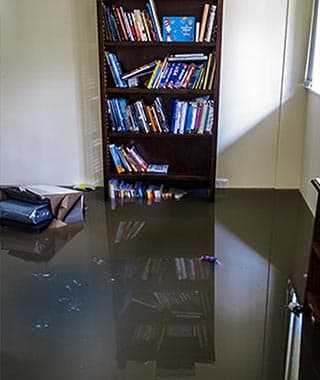Introduction
When it comes to water damage restoration, a restoration dehumidifier is a critical tool. But what exactly is a restoration dehumidifier, and why is it so important? In this blog post, we’ll explain what a restoration dehumidifier is, why it’s used, the types of dehumidifiers available, and how to use them.
What is a Restoration Dehumidifier?
A restoration dehumidifier is a machine designed to remove excess moisture from the air. It can be used to help mitigate water damage from a flood, leaky roof, or other source of water intrusion. The dehumidifier works by sucking in the moist air, cooling it, and then collecting the condensation. The condensation is then pumped out of the machine, and the now drier air is circulated back into the room.
Reasons to Use a Restoration Dehumidifier
There are several reasons why a restoration dehumidifier should be used after a water intrusion.
To Remove Excess Moisture: The most obvious reason for using a dehumidifier is to remove excess moisture from the air. This helps to reduce the chances of further damage and can help speed up the drying process.
To Reduce Mold Growth: Excess moisture can lead to mold growth, which can cause health issues and further damage. By removing the moisture, you can help prevent mold growth and reduce the risk of further damage.
To Prevent Further Damage: Left unchecked, water damage can cause serious issues such as structural damage and rotting wood. By using a restoration dehumidifier, you can help prevent this damage and ensure that your home is safe and secure.
Types of Restoration Dehumidifiers
There are two main types of restoration dehumidifiers: refrigerant and desiccant.
Refrigerant Dehumidifiers: Refrigerant dehumidifiers use a cooling system to remove moisture from the air. They are relatively easy to use and are a popular choice for water damage restoration.
Desiccant Dehumidifiers: Desiccant dehumidifiers use a chemical process to absorb moisture from the air. They are more effective in low-temperature environments and can be used to help dry out wet carpets and other materials.
How to Use a Restoration Dehumidifier
Using a restoration dehumidifier is relatively straightforward, but there are some important steps to follow to ensure that it is used correctly.
Select the Right Type: The first step is to select the right type of dehumidifier for the job. If you’re dealing with a large area of water damage, a refrigerant dehumidifier may be the best option. If you’re dealing with smaller areas or low-temperature environments, a desiccant dehumidifier may be a better choice.
Find the Source of the Moisture: Once you’ve selected the right type of dehumidifier, it’s important to find the source of the water. This will help you determine the best placement for the dehumidifier and ensure that it is used effectively.
Place the Dehumidifier in the Affected Area: Finally, it’s important to place the dehumidifier in the affected area. This will ensure that the dehumidifier can collect as much moisture as possible and help speed up the drying process.
Conclusion
A restoration dehumidifier is a critical tool for water damage restoration. It can help to remove excess moisture from the air, reduce mold growth, and prevent further damage. There are two main types of dehumidifiers: refrigerant and desiccant. And when using a dehumidifier, it’s important to select the right type, find the source of the water, and place the dehumidifier in the affected area.
With the right dehumidifier and proper use, you can help protect your home from further damage and ensure that it is safe and secure.
At Total Care Restoration, we understand the importance of using the best equipment. Our team of experienced professionals can help you quickly and effectively address your water damage problem.










